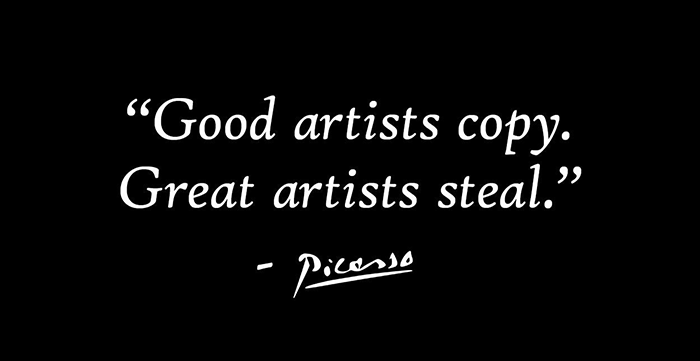I'm Kawasima from Dentsu Craft Tokyo, writing this article. Since this is likely our first meeting for most readers, allow me a brief introduction.
I spent about 15 years in Silicon Valley, Northern California, USA, from 2004 until early this spring, and have spent most of my career working at tech companies.

The San Francisco Bay shrouded in deep fog.
When I first arrived in the U.S., Nokia was the dominant mobile phone brand. They didn't have internet features like i-mode; beyond calls, the only other function was SMS, or short message service. Back in Japan, color LCD screens and camera-equipped phones (what we called "camera phones") were already mainstream. I distinctly remember feeling uneasy about spending my limited living expenses to deliberately upgrade to an older Nokia model. Regardless, that was the standard in America at the time. When I showed my friends the high-performance phone I'd brought from Japan, they'd exclaim, "Wow!"
However, as everyone knows, Silicon Valley's position changed dramatically over the next decade. Just three years after Nokia phones dominated, the iPhone launched in the same market. Then, two years after that, Google announced Android. Today, products originating from Silicon Valley dominate the majority of the global smartphone market.
Looking back, that period might have been a huge business opportunity to globally expand Japanese-made mobile phones. Conversely, it also meant there was a latent opportunity for newcomers like Apple and Google to disrupt and overturn the market.
Of course, this isn't limited to smartphones. In less than two decades, countless new tech products and services have emerged from Silicon Valley. I'd like to share what I personally experienced and learned while working on the front lines about the underlying mindset and approach that enabled such rapid innovation.
“Do it first” or “Do it better”
"Who did it first?"
It's a frequently debated topic.
The first person to conceive it, the first to invent it.
Of course, technologies and intellectual property protected by patents deserve respect and protection. However, in today's networked world of knowledge, it's often easy to prove that an idea someone came up with is likely being thought of similarly somewhere else in the world.
Simply copying someone else's idea is never something we can endorse. However, even if something already exists, discovering a hidden problem within it, finding a way to solve that problem, and possessing the technical capability to actually implement it (and not just a little better, but overwhelmingly better) can yield significant results.
The product development of Silicon Valley's renowned companies, which have created products now called innovative, is precisely rooted in this approach.

Picasso's famous quote
"Good artists copy; great artists steal."
For example, Google did not invent the internet "search engine." Rather, it began as an academic research project by two students, driven by the hypothesis that existing search engines could be significantly improved. When mixi was popular in Japan, the American SNS market was dominated by MySpace, and Facebook was initially perceived as a "latecomer and copycat." Tesla was not the first to develop electric vehicles, nor was Amazon the pioneer of online retail. Creating original video content and distributing it independently is not a business model invented by Netflix. Steve Jobs himself publicly stated, "Steal from the best."
It's not about who does it first, but who creates the best version. While generating original ideas is certainly important, I learned that innovation in the Bay Area is more about this problem-solving approach, the technical capability to realize it, and the speed of the development cycle (iteration). It's the combination of these elements that creates new "value." That's the first approach.
10x Thinking
So, how do we build something better? More specifically, how do we make it overwhelmingly better? At Google in the US, they call this approach "10x Thinking."
When trying to improve the current state, our perspective tends to focus on what's immediately visible. It's natural to first reach for problems and solutions that are already apparent.
However, this approach makes it difficult to achieve truly overwhelming results. Instead, observe the problem from a completely different perspective and consider solutions. "How can we make it 10 times better, not just 10% better?" Setting this as the benchmark reveals approaches and solutions that break free from the confines of our previous perspective.
If someone says, "That's crazy," it might actually be an opportunity. That's where a 10x solution, invisible to others, could be buried. Paradoxically, I believe the first step toward innovation is creating an inclusive environment where such seemingly "crazy," leapfrog ideas can be freely voiced without hesitation.






